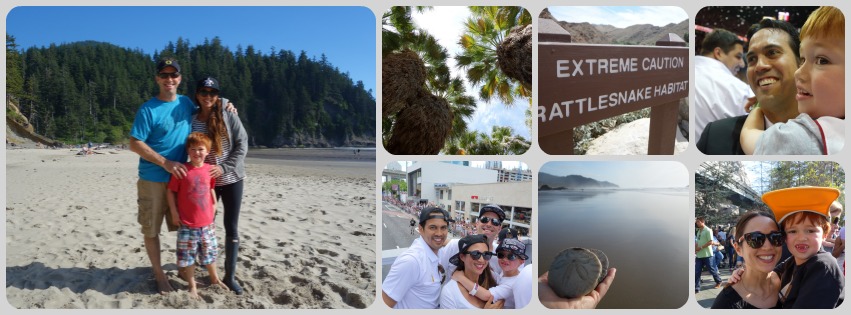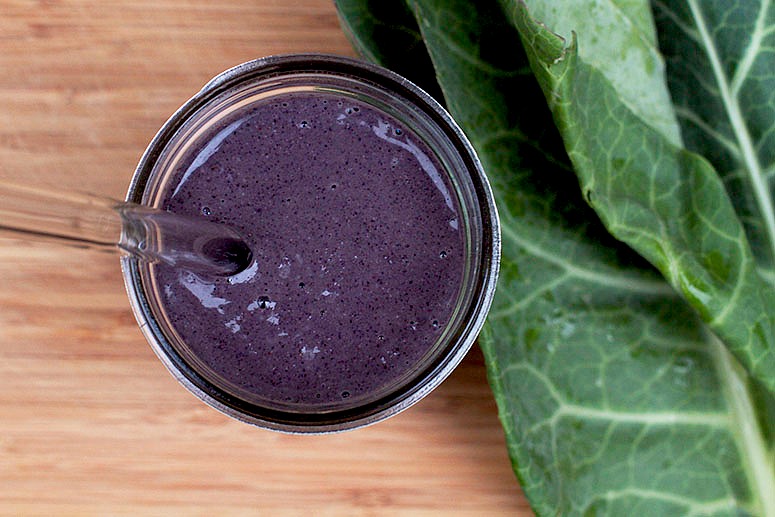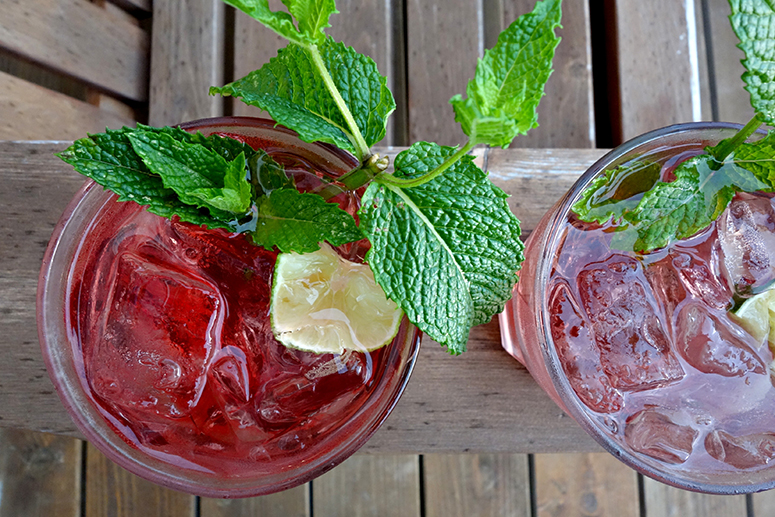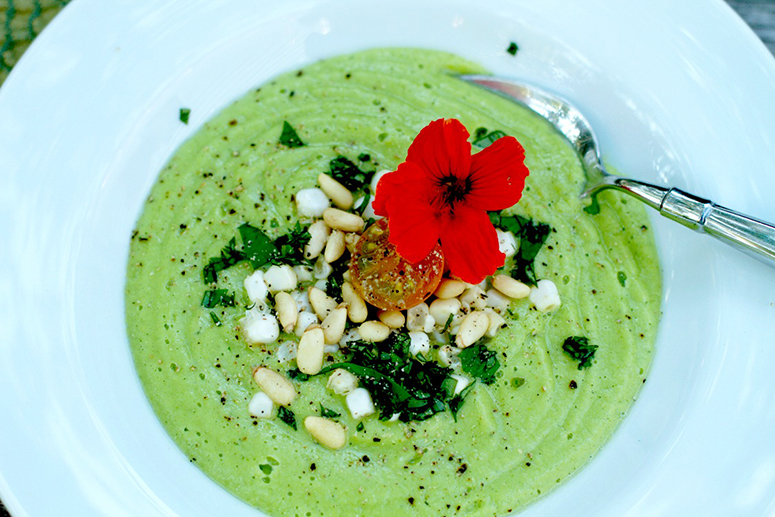Looking back on the year so far, I realized we've had a pretty epic year of travel and vacations.
We sought spring break sun in Southern California, admired the rugged beauty of the Oregon Coast, and were thrilled to be able to go to the NBA All Star Game and NBA Finals this year to root for our favorite players and coach!
Vacations are amazing. We get away from our regular routines, sleep in, let someone else do the cooking, order dessert, stay up late, have that extra cocktail.
But sometimes on vacation — okay, often — there's not enough of this:
… and waaaaay too much of this:
So what do we do when we come home from vacation — or try to squeeze, unsuccessfully, into our jeans after a string of backyard barbecues, lazy summer weekends and missed workouts?
We go on a cleanse, that's what!
Now, a lot of people are talking about cleanses and detoxes these days, so it's easy to get confused about how to go about it. Should you do a week-long juice fast? The cayenne-pepper-maple-syrup-lemon-juice Master Cleanse? Raw food cleanse?
Those methods can certainly work for some, but I find that the easiest way to do a cleanse is to try a food-based, “nutritional” cleanse. The benefits of a food-based cleanse are:
- You don't have to starve yourself.
- You eat enough food to manage your regular life — kids, work, working out — without having a hunger-induced meltdown that would shock even the most unruly toddler.
- Your digestive system gets a much-deserved break from trying to deal with your vacation margaritas, french fries and waffle cones.
- You'll learn how to eat more consciously, so you can minimize poor food choices going forward.
- You'll remove nasty toxins from your body.
- You'll enjoy some lovely results, which can often include: better digestion, increased energy, mental clarity, reduced bloat and belly fat, brighter skin, improved sleep and, yes, weight loss!
Sounds good, right?
Here a few important tips to keep in mind if you want to put yourself on a cleanse. The principles still apply whether you're doing it for three days or three weeks.
One important note: the suggestions below may seem extreme compared to your normal diet. That's because a cleanse is meant to be extreme.
Remember, the Standard American Diet (SAD) is extreme also — extremely bad for you.
And it often leads to excess weight, obesity, heart disease, high blood pressure, Type 2 diabetes and cancer. The SAD also contributes to other problematic issues such as fatigue, accelerated aging of the skin and breakouts, headaches, mood issues and even… (gasp) cellulite!
A cleanse is your opportunity to counter all of that past bad behavior and do something extremely good for you.
Ready to get started? Hooray!
There are scores of entire books written about the topic of cleanses, so this is really just an overview. But here are a few main recurring themes I've seen, plus my top tips for putting yourself on a successful cleanse, DIY-style:
1. Eliminate common causes of food sensitivities.
This is a big one. And admittedly the most difficult. But it's the foundation of cleanses and detox programs, and you can't get big results without making big adjustments.
So. Food sensitivities. Most people seem to think that if they don't have a peanut or shellfish allergy, they're completely immune to food intolerances.
But here's the thing. You don't need to have an I-NEED-AN-EPI-PEN-STAT! reaction to certain foods to suffer from food sensitivities. Food sensitivities are much more subtle than acute allergies that swell your throat shut — and the reaction to the food is often delayed, which makes it even more difficult to detect. But the effect is still there — at least for 30-50% of the population. In the case of lactose intolerance, we're talking more like 65% of the population, and around 90% for Asian-Americans.
Even if food intolerances don't cause an obvious, immediate reaction, they can trigger systemic low-grade inflammation in the body that can present itself in a number of troublesome ways: fatigue, bloating, sinus congestion, bloating, brain fog, acne, eczema, irritable bowel, joint pain, poor sleep, asthma and even the inability to lose weight (source: The Ultra Simple Diet: Kick-Start Your Metabolism and Safely Lose Up to 10 Pounds in 7 Days, by Dr. Mark Hyman).
In fact, there is currently a lot of research exploring the tie between food sensitivities and insulin resistance and diabetes.
The question is: how do we know we're sensitive to certain foods?
Blood tests are available, but they can be expensive and aren't 100% accurate. The easiest way to determine food sensitivities is to eliminate common offenders from the diet for a period of time, then reintroduce them one at a time, every 2 days or so, and measure the body's reaction to each individual item.
A cleanse is the perfect opportunity to give your body a break from foods that could be irritating your digestive and immune system. Consider eliminating the following during your cleanse:
- Gluten, which is the protein found in wheat, barley, rye and most oats.
- Dairy
- Eggs
- Corn
- Some popular cleanses also omit peanuts, soy and nightshades (tomatoes, eggplant, bell peppers)
2. Avoid Toxins.
I love a dry, ice-cold martini as much as the next person, but this is a cleanse, so we're going to eliminate booze for now.
I would also recommend cutting out coffee (even decaf can be too acidic for many people's systems). Also out: sugar, sweeteners, anything with high-fructose corn syrup (read the label — it's in everything!), and hydrogenated fats (anything fried, including my favorite Juanita's corn chips).
Other toxins can include pesticide-laden produce and livestock that has been raised on factory farms with the use of antibiotics and unsanitary, confined pens.
To minimize your exposure to toxins, buy organic produce whenever possible (a great online resource is the Environmental Working Group's Shopper's Guide to Pesticides in Produce.) If you eat animal protein, look for labels indicating that the animals were humanely raised, without the use of antibiotics (Whole Foods does a good job of highlighting this information at the butcher counter).
3. Focus on “whole,” unrefined foods and avoid anything processed.
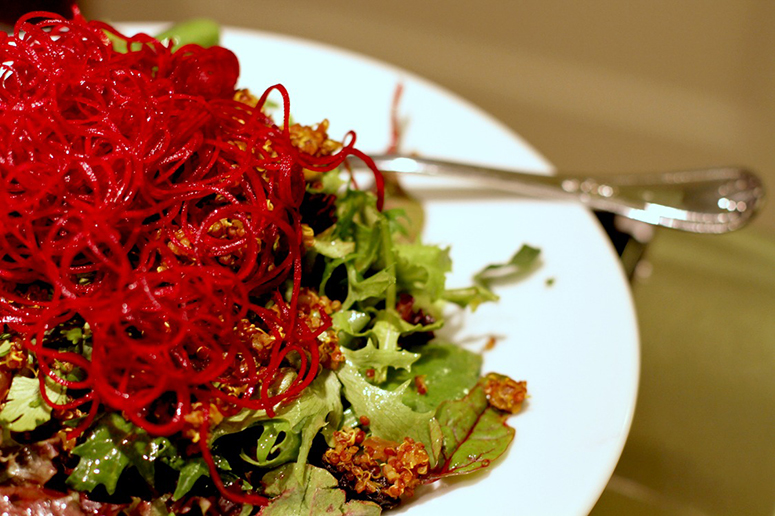
I know you're probably freaking out after reading the previous paragraphs — no gluten? no dairy? no sugar? no Americanos? no booze?
What will you eat?
The good news: you can pretty much eat unlimited green and leafy vegetables, a modest amount of fruit (berries are highly nutritious and relatively low in sugar), nuts, seeds and whole grains such as brown rice and quinoa. Plus: spices and limited amounts of simple dressings and sauces to make things taste good.
Eating a high amount of vegetables will be especially helpful during your cleanse, because the extra fiber will stabilize blood sugar levels, create fullness (reduce hunger), and usher toxins out of the body.
For protein, use nuts and seeds (BTW, just two tablespoons of hemp seed provide 11 grams of protein), as well as your favorite beans and legumes.
If you use animal protein, purchase the highest quality, “clean” protein you can afford: poultry humanely raised without the use of antibiotics, and wild fish such as salmon and halibut. There is plenty of protein in about 4-5 ounces of meat, so you can get 2-3 servings out of one chicken breast or small portion of fish. Some cleanses support grass-fed lamb, but beef and pork are usually out. And, no cured meats, obviously. Sorry, charcuterie lovers!
A simple meal plan might look like this: a smoothie for breakfast (see below), some berries or cherries for a mid-morning snack, a simple green salad with lean protein for lunch, and a vegetable based soup and salad for dinner.
During the cleanse, I also recommend avoiding all processed carbs — even gluten-free breads, crackers and snacks. These foods often rate high in terms of glycemic load, which means they'll make your blood sugar spike.
4. Try having a smoothie or blended soup for 1-2 meals per day.
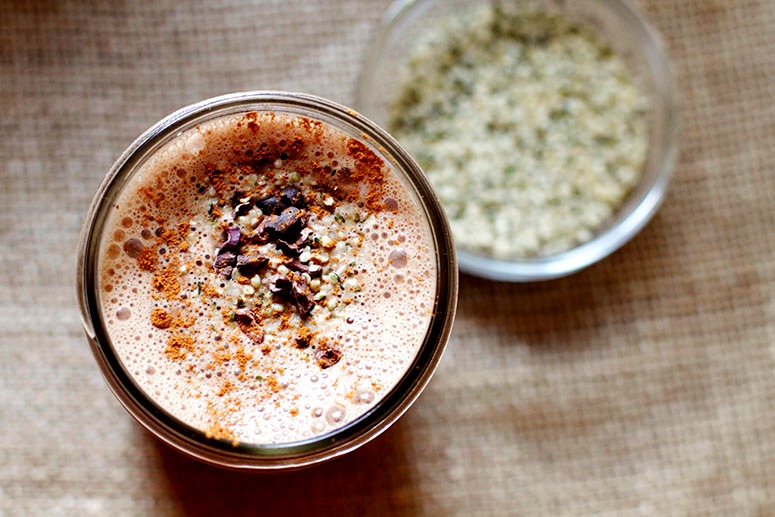
I picked up this approach from Dr. Alejandro Junger's book, “Clean: The Revolutionary Program to Restore the Body's Natural Ability to Heal Itself.” Since reading the book several years ago, I've gone on several cleanses using Dr. Junger's approach, and have had great success each time. In fact, the morning smoothie has become a permanent part of my daily routine. Raw soups can be helpful if you prefer more savory foods for your evening meal. An example of a blended soup could be: water, zucchini, a bit of red onion, fresh dill and some soaked raw cashews for creaminess.
5. Use a probiotic.
You may have noticed that our “guts” have been in the media a lot lately. That's because about 70% of our immune system lives there, deep in our gastrointestinal system, and there's a ton of research exploring the connection between “good” intestinal bacteria (or, “flora,” which I think sounds nicer) and good health.
Unfortunately, our toxic modern diet and lifestyle can wreak havoc on beneficial bacteria, and an imbalance can contribute to a whole range of issues such as chronic disease, auto-immune disorders, metabolic syndrome, Type 2 diabetes and even obesity. Part of keeping a healthy gut requires healthy, whole foods that won't irritate the system (see #1-3). You can also take a probiotic supplement to help support beneficial bacteria and healthy digestion. Or, you could eat fermented foods such as sauerkraut or kimchi. Just don't turn to yogurt during your cleanse — no dairy, remember?
6. Move Your Body.
A bit of daily exercise is always a great idea, and especially while on a cleanse. Taking a walk or yoga class will help distract you from food cravings, move toxins out of your body and relieve every day stress. If you intend to keep your intense workouts during your cleanse, refuel with healthy foods: a green smoothie, fresh cut vegetables with some homemade hummus, or a salad with a handful of nuts and a drizzle of dressing.
7. Set Yourself Up for Success.
When it comes to cleanses, it's not easy to just wing it and hope for the best. You'll need to set aside some time to make a meal plan for the week(s) ahead, shop for groceries, clean out your pantry (if the Oreos aren't there, you can't eat them!), and clear your social calendar — take it from me, a cleanse and “girls' night out” don't mix!
There are many, many options for support out there. Health coaches like me often lead cleanses and provide individual nutrition consulting.
You can also follow a cleanse outlined in a book — if you choose that route, I have a few solid recommendations:
- Clean: The Revolutionary Program to Restore the Body's Natural Ability to Heal Itself, by Dr. Alejandro Junger
- The Ultra Simple Diet: Kick-Start Your Metabolism and Safely Lose Up to 10 Pounds in 7 Days, by Dr. Mark Hyman
- 21-Day Weight Loss Kickstart: Boost Metabolism, Lower Cholesterol, and Dramatically Improve Your Health, by Dr. Neal Barnard
- Eat to Live: The Amazing Nutrient-Rich Program for Fast and Sustained Weight Loss, by Dr. Joel Fuhrman
Depending on how “clean” you eat already, simply cutting out gluten, dairy and sugar for a week could deliver some dramatic results.
But why stop there? A cleanse is meant to be a challenge, but in a good way. So rally the people around you for support — or get them to join you — and try a cleanse for a week or two.
Your post-vacation belly will thank you. As will your immune system. And your skin. And your energy levels.
And your skinny jeans will probably thank you, too.
How about you — have you tried a cleanse in the past? What worked? What didn't work? Please post a comment below — I'd love to hear from you!

